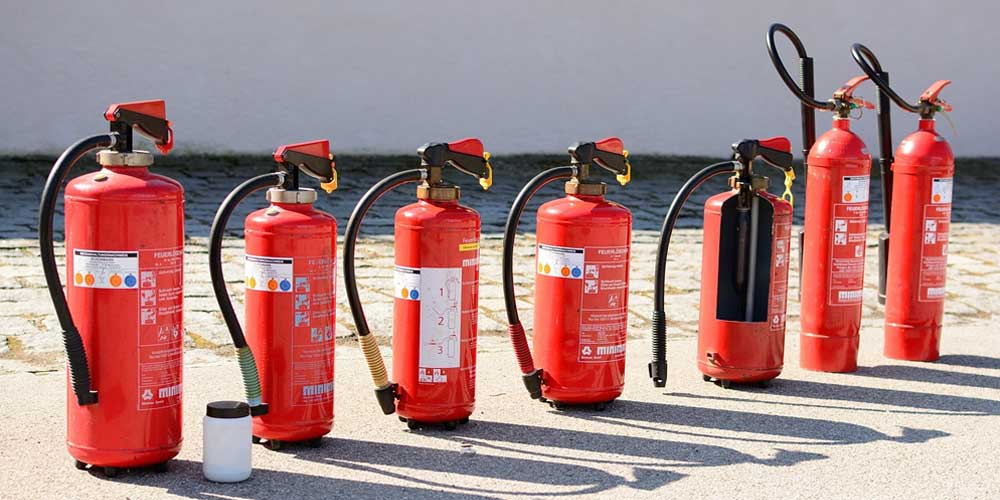[Powder in life] Do you know how much powder is escorting your safety?
Powder fills our lives, and it exists in all aspects of our lives. In fact, they are still protecting our lives at all times, making our lives safer and more beautiful.
Removal of formaldehyde
In the development of the coating industry, formaldehyde has always played an important role: as an organic solvent for coatings to help the mixing and dispersion of coatings; enhance the scratch resistance and friction resistance of the coating; ensure the chemical stability of the coating for long-term storage…
However, the free formaldehyde in the paint will form a film as the paint dries, and will be released into the environment in the form of VOC, posing a great health threat to humans and other organisms in the environmental system. Long-term exposure to low-dose formaldehyde can cause chronic respiratory diseases, and serious diseases such as nasal cavity, oral cavity, throat, skin, and digestive tract cancers. Higher concentrations can cause nausea and vomiting, coughing, chest tightness, wheezing, pulmonary edema, and even immediate death.
At present, there are two commonly used methods of adsorbing formaldehyde, physical adsorption and chemical decomposition. Physical adsorption needs to select materials with physical adsorption, and use its surface structure to absorb free formaldehyde released in the environment. At present, the internationally popular adsorption materials mainly include the following types: diatomaceous earth, activated carbon, and medical stone. As a natural material, diatomaceous earth has a microporous structure that makes it have a good absorption effect on harmful gases such as formaldehyde, and achieves the effect of purifying the air.

Flame retardant and fire extinguishing materials
We often come into contact with them in our lives, ranging from daily necessities to large buildings, and there is a certain fire hazard. Human factors lead to missing and late reporting of electrical fires, and failure of alarm equipment to fail to recover in time. Many factors make fire accidents happen frequently. It is important to do a good job of prevention. The response measures when a fire occurs is also very important. Fire extinguishers are one of the most common fire extinguishing tools. The most commonly used fire extinguishers in general homes and public places are portable dry powder fire extinguishers. Firefighters also need to wear flame-retardant suits to protect themselves when fighting fires.
The dry powder fire extinguisher is equipped with dry powder fire extinguishing agent. This dry powder fire extinguishing agent is easy to flow and dry. It is composed of inorganic salt and crushed and dried additives, which can effectively fight the initial fire. Dry powder fire extinguishing agents are generally divided into two categories: BC dry powder fire extinguishing agents (sodium bicarbonate, etc.) and ABC dry powder (ammonium phosphate, etc.). It is mainly used to fight the initial fires of flammable liquids such as petroleum and organic solvents, combustible gases and electrical equipment.
Flame-retardant clothing is one of the most widely used types of personal protective equipment. The principle of flame-retardant clothing protection is mainly to take shielding effects such as heat insulation, reflection, absorption, and carbonization isolation. Flame-retardant clothing protects workers from open flames or heat sources. . It is widely used in oil fields, petrochemical industry, gas stations, chemical industry, fire protection and other occasions where there are various protection requirements for clothing. There are two main technologies for flame retardant clothing. One is to accelerate fiber dehydration and carbonization to reduce combustible substances to achieve flame retardancy, such as the ammonia treatment of Indura fabric and the treatment of cotton cloth by Proban; the other is to change the internal structure of the fiber through a chemical process. , Reduce combustible components, achieve the purpose of flame retardant, such as Nomex, PBI and PR-97TM and other self-flame retardant fibers.

Car brake pads
Automobile brake pads, also called automobile brake pads, refer to the friction material fixed on the brake drum or brake disc that rotates with the wheel. The friction lining and the friction lining are subjected to external pressure and generate friction to achieve the deceleration of the vehicle. Purpose.
The choice of friction material determines the braking performance of the brake pads. The friction layer in the brake pad is composed of reinforcing materials, adhesives and fillers. Friction materials are divided into three types: asbestos, semi-metal and organic (NAO). The main powders added in these three materials are:
- Asbestos
Asbestos accounts for 40-60% of the composition of asbestos brake pads. Asbestos is composed of fiber bundles and has high fire resistance, electrical insulation and heat insulation properties, and is an important fireproof, insulation and heat preservation material.
- Rubber
The rubber is added as a reinforcing agent to make the friction material more wear-resistant. Because of its excellent viscoelasticity, it is often added to brake pads to reduce noise.
- Graphite
Graphite powder is a commonly used lubricant in some friction materials. During the friction process of brake pads, the debris generated due to wear will accumulate on the surface of the friction material to form a carbon phase friction layer, which is adhesive between the brake pad and the wheel. . Therefore, within a certain temperature range, graphite powder can increase the friction coefficient during braking.
- Alumina, zirconium silicate
Shi’s new ceramic brake pads subvert the traditional concept of ceramic brakes. It is composed of ceramic fiber (the main component of alumina), non-ferrous filler material, adhesive and a small amount of metal. Adding alumina can increase the coefficient of friction and reduce the rate of wear; adding silicon carbide can greatly increase the coefficient of friction, while the wear rate is only a small increase; a certain amount of zirconium silicate has a great effect on the size and stability of the friction coefficient of automobile brake pads. Big impact.
- Other
Both barium sulfate and calcium carbonate are very commonly used fillers, which can improve the thermal stability of friction materials and at the same time improve the thermal decay performance of the materials, but at higher temperatures, the former is not as stable as the latter. Mica and vermiculite are two other commonly used fillers. They have a flat mesh structure and can suppress low-frequency braking noise. However, the vermiculite peels off rapidly at about 800°C, and the abrasion resistance of mica is poor at high temperatures.

Sunscreen
Moderate ultraviolet radiation can play the role of sterilization and promote vitamin D synthesis, but long-term exposure to ultraviolet rays, the UVA and UVB in the ultraviolet rays will cause serious damage to the skin, causing the skin to become dark, aging, sunburn, redness, and even swelling. Can cause skin cancer. In order to prevent ultraviolet rays from harming us, we need to take certain sun protection measures. In addition to hard sun protection such as sun protection clothing, sun umbrellas, and sun hats, soft sun protection such as sunscreen is also essential.
Sunscreen is divided into physical sunscreen and chemical sunscreen. The main components of physical sunscreen are titanium dioxide and zinc oxide. Titanium dioxide is mainly obtained from the decomposition of rutile with acid or titanium tetrachloride. Most skin care products and cosmetics contain titanium dioxide; oxidation; Zinc is a hardly soluble oxide in water. It has astringency and a certain sterilization ability, which can make almost all wavelengths of UV attack ineffective, and is not easy to sensitize. When the two powders are used as physical sunscreens, they are usually nano-level. , Will not penetrate the stratum corneum of the skin.

Medicine
Medicines and nutrients protect your body at all times. Did you know that these common medicines are also made of powder?
Montmorillonite powder for adults and children with acute and chronic diarrhea. The main ingredient is montmorillonite, which is a layered mineral composed of extremely fine-grained hydrous aluminosilicate; used to treat acute itching such as urticaria and rash Calamine lotion for skin diseases, its main ingredients are calamine (a carbonate mineral calcite family smithsonite, mainly containing zinc carbonate), zinc oxide; bezoar detoxification tablets for heat-clearing and detoxification, its main component is artificial bezoar , Realgar, gypsum, rhubarb, scutellaria, platycodon, borneol, licorice, realgar, is the common name of tetraarsenic tetrasulfide (As4S4), is an ore containing sulfur and arsenic, gypsum is a monoclinic mineral, is the main chemical component It is a hydrate of calcium sulfate (CaSO4).

After 20 years of continuous research and exploration, ALPA has more advanced technical experience in fine chemical grinding and crushing. Including pharmaceutical, coating, paint, light industry, powder metallurgy, building materials, chemical industry and other industries, the use of ultra-fine powder technology to easily handle different raw materials, the size of the material particles is from 2mm to 2μm. Thereby greatly improving the utilization rate of materials and effectively improving production efficiency. Using jet mill technology, ultra-fine and ultra-pure production can be realized, and it is suitable for processing high value-added minerals such as talc and medical stone.
